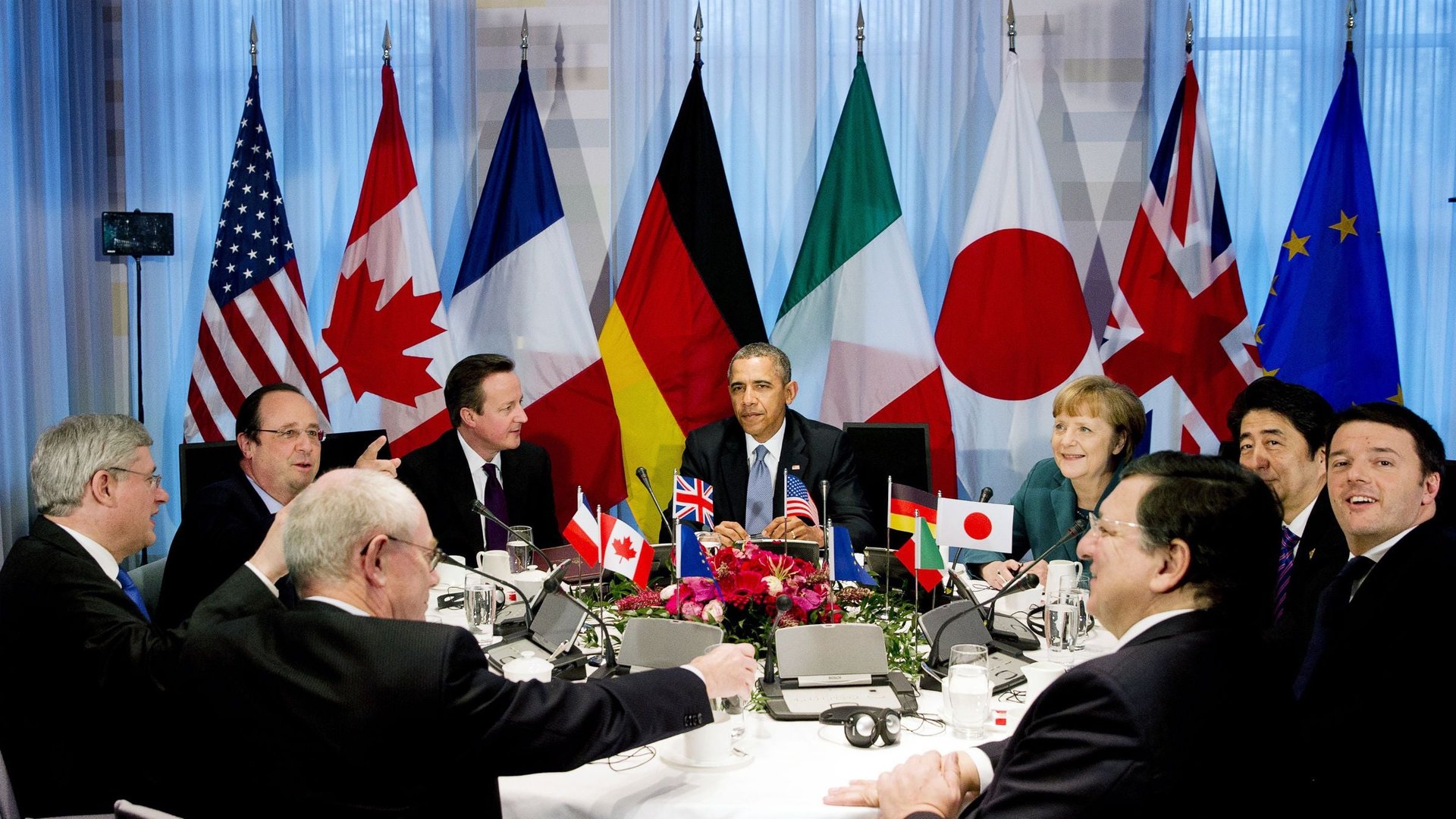This had better be the last time only one woman attends the G7
As the leaders of the G7 countries meet today in Brussels, I am reminded of a meeting I attended many years ago in my native Norway. It was 1974 and I was my country’s young female environment minister. I had been invited to visit the national gathering of a large, influential Norwegian industrial company. Except for the secretary to the CEO, I was the only woman in a room of 200 men.


As the leaders of the G7 countries meet today in Brussels, I am reminded of a meeting I attended many years ago in my native Norway. It was 1974 and I was my country’s young female environment minister. I had been invited to visit the national gathering of a large, influential Norwegian industrial company. Except for the secretary to the CEO, I was the only woman in a room of 200 men.
Forty years later, you would think I would be more surprised that Angela Merkel is the only woman at the G7—but, sadly, I am not. There has been some change, surely. However, there are currently only 18 female heads of state/government in the world. In business, women hold 4.8% of Fortune 500 and Fortune 1000 CEO positions (24 and 48 CEOs respectively). Men who start work at a FTSE 100 company are four and a half times more likely to reach the boardroom than women. Not surprisingly, only one in seven delegates to the World Economic Forum in Davos this year were women.
This is unacceptable. We already know that when women enjoy equality with men, societies are more productive economically, more inclusive, and more stable. Above all, equality for women is a basic human right. Change is happening much too slowly.
Women are rising—but not to the very top
However, all is not lost. We are seeing some progress: women are working their way up. The number of women parliamentarians across the world is slowly rising—it is currently almost 22%.
Recent projections from the Inter-Parliamentary Union and UN Women predict that women could achieve equality if the current rate of progress is maintained—but not for another 20 years.
Why do women so often stop before they reach the highest level? It is partly due to continued discrimination, but it is also because women have internalised this discrimination, and too often refrain from putting themselves forward.
Since we should not wait another generation or two for women to be on an equal footing with men, we need to be more proactive in promoting women’s participation.
Cultural change has to be deliberate
With political will, governments can accelerate this progress and change the scene for women—and this is something that can be done everywhere. There are tried and tested policies that can help ensure women become full participants in both the economic and the political life of a country.
In the early 1980s, my political party passed a rule that elected bodies must have at least 40% of either sex elected to them. We were careful to make the rule a neutral one, not to let men argue against the principle itself. Now in the Norwegian parliament we have 40% women.
By the time I stepped down as Prime Minister of Norway in 1996, parental leave for a year with 80% pay had already been put in place—for women and some men. As men are now gradually being obliged to take a longer paternity leave, employers can no longer look at only women at potential “risks” of taking a leave of absence for family reasons.
Through legislation and positive discrimination such as quotas, governments can help raise women to the level where they belong. If it can be done in Norway, as well as a number of other countries, then it can be done anywhere.
Governments and parliaments must also take responsibility for helping to change how women are viewed not only by institutions but by their fellow citizens as well. With greater transparency of parliaments and boardrooms, and with greater media attention on these issues, we can help break down the myth that women are not equally ready or as capable as men to serve in high positions.
Additionally, the media must change the way it views women executives and leaders. When I was Prime Minister, journalists sometimes described me as “too tough” and not soft and smiley enough. But nobody questions when a man needs to be tough. Nor do they comment on his dress or physical appearance as they do women.
Supporting women to step up
Women themselves need to be ready to take risks and show courage. When the former Norwegian Prime Minister chose me to be part of his cabinet in 1974—a relatively unknown doctor suddenly elevated to Minister of the Environment—I instinctively felt I could not accept this appointment given my lack of political experience. But how could I refuse, given my conviction that women should take equal responsibilities to men?
We need to help societies change, to give women the confidence that they can step up; that they are indeed ready to fully participate.
What I have been expressing for years, and what young leaders like Sheryl Sandberg are now concluding, is that women do indeed need to “lean in.” But they also need their societies, husbands, governments, businesses and the media to be behind them all the way.